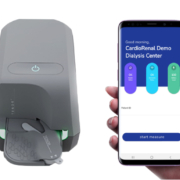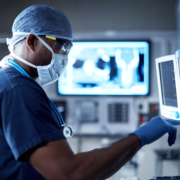Stevanato Group to be exclusive manufacturing partner for Owen Mumford’s Aidaptus auto-injector
Owen Mumford, a global leader specialised in the design, development and manufacture of injectable drug delivery systems for the pharmaceutical, biotech and generics industries, has signed an exclusive agreement with Stevanato Group, a global provider of drug containment, drug delivery and diagnostic solutions for the Aidaptus auto-injector.
The agreement makes Stevanato Group an exclusive manufacturing partner for the Owen Mumford designed auto-injector, offering a full set of capabilities to its pharmaceutical customers. Stevanato Group will mould the components for Aidaptus and provide final and sub-assembly equipment, while also offering market-leading pre-filled syringes to enable pharmaceutical customers to create the final product for patient use. Assembly of the components will be undertaken by both Stevanato Group at its global manufacturing sites and by Owen Mumford at its automated assembly centre of excellence in the UK.
World-class device expertise
The collaboration is intended to bring added value to customers, matching world-class device expertise with premium manufacturing capabilities. It is expected to streamline device production and deliver the full value of the innovative Aidaptus platform to the market.
Aidaptus
Aidaptus is a 2-step, single use auto-injector with a versatile design that accommodates both 1mL and 2.25 mL prefilled glass syringes in the same base device. It also features plunger sensing technology with a self-adjusting plunger rod that automatically adapts to the individual plunger positions and different fill volumes in each syringe, with no change parts required. The auto-injector is also able to accommodate a unique variety of drug viscosities.
“Aidaptus will help patients to self-administer their individual therapies using a simple and easy to use device,” said Adam Mumford, Director of Owen Mumford. “At the same time, this auto-injector can help to reduce complexity, minimise supply chain risk and simplify final assembly for pharmaceutical and biotechnology companies thanks to its ability to adapt to different viscosity, syringe sizes and fill volumes. Often during development or life-cycle management of injectable drug products, changes in these parameters can occur. Now for the first time, the device does not have to be changed as well.”
Mauro Stocchi, Chief Business Officer of Stevanato Group, commented: “We believe this agreement is an important step in enhancing and growing the opportunities in our drug delivery systems portfolio as we broaden our capabilities in this key market. As we are constantly working with our customers to satisfy their needs, we continue to experience an increase in demand for auto-injectors. With this agreement, we will exploit the full breadth of Stevanato Group integrated capabilities being able to offer device manufacturing, assembly equipment, together with pre-fillable syringes and inspection systems.”
Steven Kaufman, VP for Drug Delivery Systems at Stevanato Group, added: “The Aidaptus auto-injector platform combines ease of use for patients with faster time-to-market access for pharma organisations. We aim to be the strategic partner with which to develop innovative combination products as we continue the expansion of our integrated capabilities in the drug delivery space, and for this reason we are very excited to work with Owen Mumford and provide access to its exciting new auto-injector platform.”












